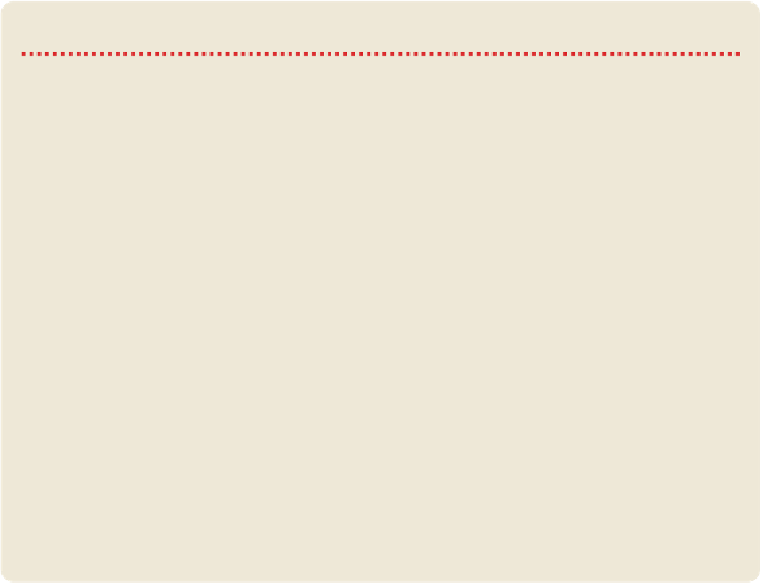Travel Reference
In-Depth Information
MANDALAS
The mandala (kyilkhor,literally 'circle') is more than a beautiful artistic creation, it's also a
three-dimensional meditational map. What on the surface appears to be a plain two-di-
mensional design emerges, with the right visual approach, as a three-dimensional pic-
ture. Mandalas can take the form of paintings, patterns of sand, three-dimensional mod-
els or even whole monastic structures, as at Samye. In the case of the two-dimensional
mandala, the correct visual approach can be achieved only through meditation. The
painstakingly created sand mandalas also perform the duty of illustrating the imperman-
ence of life (they are generally swept away after a few days).
A typical mandala features a central deity surrounded by four or eight other deities who
are aspects of the central figure. These surrounding deities are often accompanied by a
consort. There may be several circles of these deities, totalling several hundred deities.
These deities and all other elements of the mandala have to be visualised as the three-di-
mensional world of the central deity and even as a representation of the universe.
The mandala is associated with Tantric Buddhism and is chiefly used in a ritual known
as sadhana(means for attainment). According to this ritual, the adept meditates on, in-
vokes and identifies with a specific deity, before dissolving into emptiness and re-emer-
ging as the deity itself. The process, in so far as it uses the mandala as an aid, involves a
remarkable feat of imaginative concentration. One ritual calls for the adept to visualise
722 deities with enough clarity to be able to see the whites of their eyes and hold this
visualisation for four hours.
To see a selection of Tibetan carpets visit the Gang Gyen Carpet Factory in Shigatse or
check out the Wangden-style carpets at Dropenling.
Statuary & Sculpture
Tibetan statuary, like Tibetan painting, is almost exclusively religious in nature. Ranging
in height from several centimetres to several metres, statues usually depict deities and
revered lamas. Most of the smaller statues are hollow and are stuffed with paper texts,
prayers, amulets and juniper when consecrated. Very few clay or metal sculptures remain-
ing in Tibet date from before 1959.



